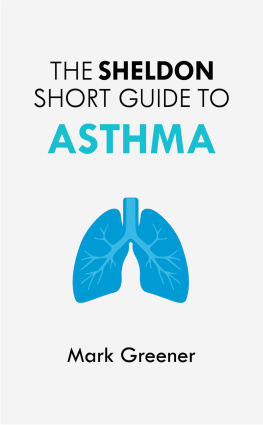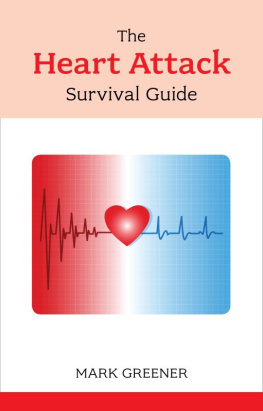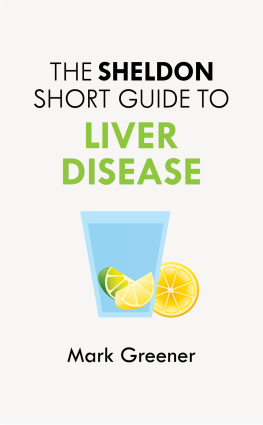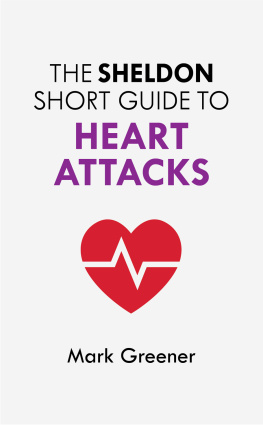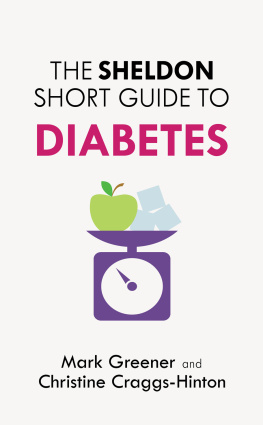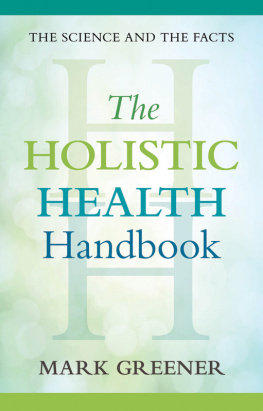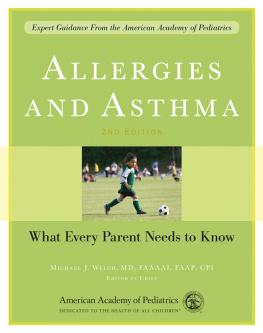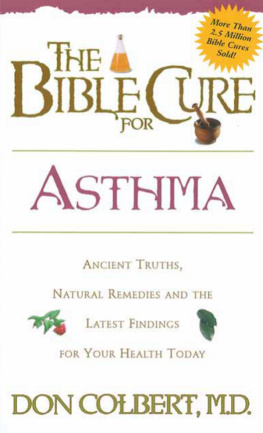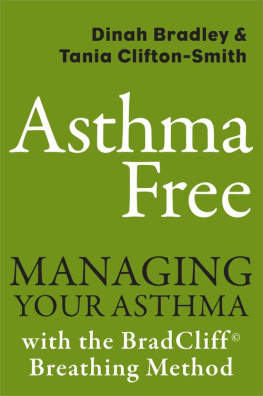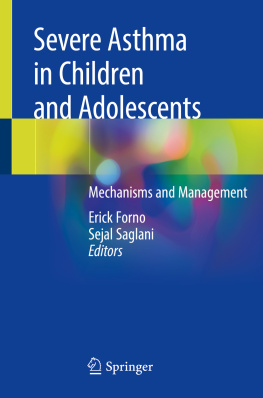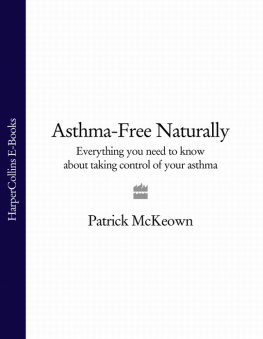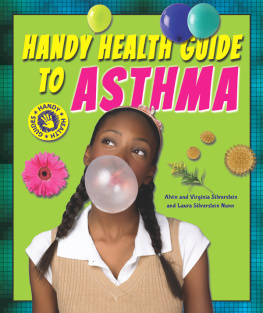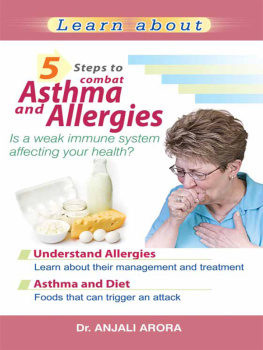
The Sheldon Short Guide to
Asthma
Mark Greener spent a decade in biomedical research before joining MIMS Magazine for GPs in 1989. Since then, he has written on health and biology for magazines worldwide for patients, healthcare professionals and scientists. He is a member of the Royal Society of Biology and is the author of 21 other books, including The Heart Attack Survival Guide (2012) and The Holistic Health Handbook (2013), both published by Sheldon Press. Mark lives with his wife, three children and two cats in a Cambridgeshire village.
Sheldon Short Guides
Asthma
Mark Greener
Depression
Dr Tim Cantopher
Diabetes
Mark Greener and Christine Craggs-Hinton
Heart Attacks
Mark Greener
Liver Disease
Mark Greener
Memory Problems
Dr Sallie Baxendale
Phobias and Panic
Professor Kevin Gournay
Stroke Recovery
Mark Greener
Worry and Anxiety
Dr Frank Tallis
THE SHELDON
SHORT GUIDE TO
ASTHMA
Mark Greener

First published in Great Britain in 2016 by Sheldon Press
An Hachette UK Company
Sheldon Press
Carmelite House
50 Victoria Embankment
London EC4Y 0DZ
www.sheldonpress.co.uk
Copyright Mark Greener 2016
All rights reserved. No part of this book may be reproduced or transmitted in any form or by any means, electronic or mechanical, including photocopying, recording, or by any information storage and retrieval system, without permission in writing from the publisher.
The author and publisher have made every effort to ensure that the external website and email addresses included in this book are correct and up to date at the time of going to press. The author and publisher are not responsible for the content, quality or continuing accessibility of the sites.
British Library Cataloguing-in-Publication Data
A catalogue record for this book is available from the British Library
ISBN 9781847093813
To Yasmin, Rory, Ophelia and Rose, with love
This is not a medical book and is not intended to replace advice from your doctor. Consult your pharmacist or doctor if you believe you have any of the symptoms described, and if you think you might need medical help.
I used numerous medical and scientific studies to write the book that this Sheldon Short is based on: Coping with Asthma in Adults . Unfortunately, there isnt space to include references in this short summary. You can find these in Coping with Asthma in Adults , which also discusses the issues in more detail. I have updated some facts and figures.
Asthma often evokes images of wheezing children puffing on inhalers. However, around four in every five asthma sufferers are adults. Some have lived with asthma since childhood. In some, symptoms faded during adolescence, but later resurfaced. Some develop asthma for the first time as adults: work-related factors may cause up to a quarter of asthma cases in adults, for instance.
Modern drugs mean that deaths from asthma are, thankfully, now rare. Nevertheless, around 1,200 people die every year from asthma in the UK, the overwhelming majority of whom are adults. Better care could prevent up to 90 per cent of deaths and 75 per cent of hospital admissions due to asthma. In addition, poorly managed asthma undermines almost every aspect of life, from sleep to social life to sex.
Yet asthma in adults rarely receives the attention it deserves. For instance, allergies the classic cause of asthma in children underlie, at most, only half of cases in adults. And at least half of people aged 65 years and over have three or more diseases. Some of these other diseases complicate asthmas diagnosis and management. Nevertheless, relatively few studies examine asthma caused by factors other than allergy or the underlying biology in adults, which is essential to develop new treatments. Indeed, many studies exclude older patients or those with other diseases. This simplifies analysis and may protect volunteers from side effects. But such exclusions make it difficult for doctors to extrapolate from the study to the adults in their clinic.
Such issues help explain why asthma in adults often remains poorly managed. In one large international study that included the UK, called INSPIRE, adults with asthma experienced, on average, one attack (exacerbation) every month. About a quarter of exacerbations were severe. Even people reporting supposedly well-controlled asthma experienced, on average, just over six exacerbations annually.
This Sheldon Short focuses on adults living with asthma. (Well not cover asthma in pregnancy and breastfeeding, which are discussed in the original book. Please speak to your doctor or midwife.) Well consider diagnosis and triggers as well as the drugs and other approaches adults can take to control their symptoms, enrich their quality of life and perform the activities of daily life that everyone else takes for granted.
According to Asthma UK (), doctors and nurses treat around 4.3 million adults for asthma. Yet asthma in adults often remains undiagnosed. For instance, older people may mistakenly regard breathlessness or wheeze as part of growing older. However, breathlessness and wheeze are often signs of asthma, chronic obstructive pulmonary disease (COPD) or another disease. So, get yourself checked.
Inside our lungs
At rest, a healthy person typically breathes 12 to 20 times each minute, inhaling and exhaling around 500 ml of air. Our lungs dont expand fully each time we take a breath. Most adults can expel between 3 and 5 litres of air after taking the deepest breath they can.
Your left lung, which has two lobes, lies over your heart. Your right lung is slightly larger and has three lobes. Your ribcage surrounds and protects the spongy, fragile lungs and anchors some of the muscles you use to breathe ().
Muscles and breathing
Usually, you rely on two sets of muscles to breathe.
The diaphragm is a thick sheet of muscle under the lungs, anchored to the ribcage, the sternum (breastbone) and the spine.
The intercostal muscles run between each rib.
When relaxed, the diaphragm is dome-shaped. When you inhale, your diaphragm flattens, and the intercostals contract. This pulls the ribcage up and out, which increases the space in the chest. Air flows through your mouth and nose, along your windpipe (trachea) and into your lungs. The diaphragm and intercostals then relax and the chest springs back to its original shape. This expels the air, now rich in carbon dioxide. Other muscles aid breathing, such as when you exercise.
From the nose to the alveoli
Air flows from the mouth and nose along the trachea. Horseshoe-shaped rings of cartilage rather like the rings on a vacuum cleaner hose protect the trachea from crushing.
The trachea forks into two major bronchi, one to each lung. Each major bronchus divides another 10 to 25 times into bronchi and then bronchioles, ending in between 300 million and 500 million alveoli, which look like tiny cauliflower florets (). This shape packs a vast area into a relatively small volume:
Our lungs contain approximately 1,500 miles of airways.
The surface area of an adults alveoli is about 70 m roughly the same as a tennis court.
A network of around 620 miles of capillaries small, thin blood vessels surrounds the alveoli ().
Oxygen dissolves in the fluid covering the alveoli and crosses into the blood. Red blood cells pick up and carry oxygen to your tissues. Red blood cells transport some waste carbon dioxide back to the lungs. About 90 per cent of the carbon dioxide reaches the lungs dissolved in blood.
Next page
